
Australian Journal of Chemistry
Volume 67 Number 10 2014
RESEARCH FRONT: 4th Molecular Materials Meeting (M3) @ Singapore
Also Featuring RACI Award papers
CH14479The 4th Molecular Materials Meeting (M3) @ Singapore
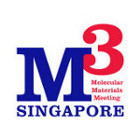
This foreword introduces some selected papers presented at the 4th Molecular Materials Meeting in Singapore (M3@Singapore) from 14 to 16 January 2014 that was organized by the Institute of Materials Research and Engineering (IMRE) of A*STAR, Singapore. The conference brought together leading researchers in the disciplines of chemistry, materials science, physics, biology, medicine, and engineering to discuss advances in molecular materials and cultivate cross-disciplinary research.
CH14194The Rise of Elemental Two-Dimensional Materials Beyond Graphene
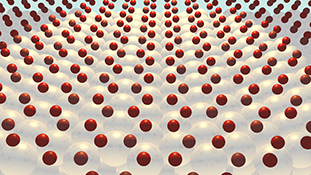
This paper sheds light on a new class of two-dimensional materials beyond graphene: silicene, germanene, and stanene.
CH14225Biosynthesis of Flavour-Active Esters via Lipase-Mediated Reactions and Mechanisms
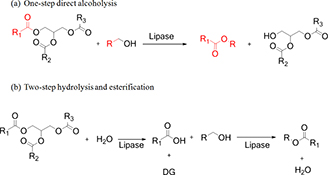
This short review highlights recent understanding of the lipase-catalyzed synthesis of flavour-active esters in various systems, including solvent-free, organic solvents, ionic fluids, supercritical fluids, and aqueous media. Mechanisms of reaction are also covered including esterification and transesterification. The biocatalytic synthesis of aroma compounds via enzymatic methods is becoming an integral part of green chemistry.
CH14083Fluorogenic Quantification of Albumin
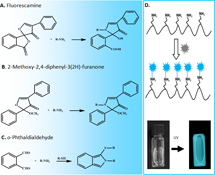
Non-fluorescent fluorescamine reacts with primary amines to form highly fluorescent products, affording simple, fast, and sensitive quantification of albumin. Chemical reactions of non-fluorescent (A) fluorescamine, (B) 2-methoxy-2,4-diphenyl-3(2H)-furanone, and (C) o-phthaldialdehyde with primary amines form various fluorophores. (D) Highly fluorescent product can be observed under a UV lamp.
CH14148Magnetic Pd/Fe3O4 Composite: Synthesis, Structure, and Catalytic Activity
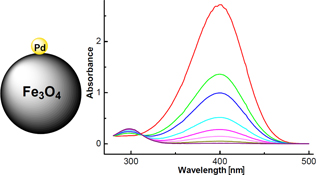
Nanocomposite Pd/Fe3O4 has been prepared via a coordination-driven approach, and shows efficient catalytic activity towards the reduction reaction of 4-nitrophenol to 4-aminophenol.
CH14111A Three-Component 1D/2D → 2D Interpenetrated Coordination Network: Structure and Gas Adsorption Studies
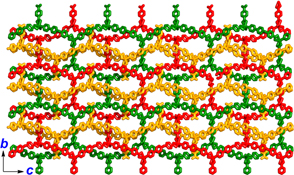
We herein report a Cd-based coordination polymer containing three integrated polymeric components: two neutral and entangled two-dimensional (6,3) nets and one zwitterionic one-dimensional chain with corner-sharing grids propagating along the c-direction to lock the consecutive ligand struts of the (6,3) nets. This coordination polymer is porous to selectively adsorb CO2.
CH14204Rheological Properties and Salt Resistance of a Hydrophobically Associating Polyacrylamide
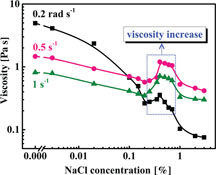
Rheological properties of a hydrophobically associating polyacrylamide that exhibited stronger salt resistance compared with partially hydrolyzed polyacrylamide and the corresponding salt resistance mechanism was investigated in detail.
CH14214Formation of Core–Shell Structures in Emulsion Electrospun Fibres: A Comparative Study

Assuming the surfactant can affect the formation of the core–shell structure of emulsion-electrospun fibres, two surfactants, Span 80 and SDS, were used separately in PLGA emulsions for electrospinning. Fibre samples collected along the fibre trajectory during emulsion electrospinning were studied and the respective fibre structural evolution processes are proposed.
CH14264Nanoporous Platinum Electrodes as Substrates for Metal Oxide-Supported Noble Metal Electrocatalytic Nanoparticles: Synergistic Effects During Electrooxidation of Ethanol

Immobilization of WO3- or TiO2-supported PtRu nanoparticles onto the nanoporous platinized substrates leads to the formation of multifunctional electrocatalytic systems reactive towards oxidation of ethanol at fairly low potentials (<0.4 V vs RHE). Among the important issues are the presence of –OH groups at metal nanostructures, including oxidative removal of –CO adsorbates.
CH14274Photoluminescence from Chitosan for Bio-Imaging
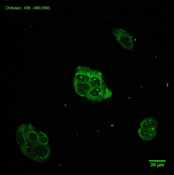
Chitosan is fluorescent for bio-imaging with low cytotoxicity due to the reaction with carbon dioxide. This paper investigates the photoluminescent behaviours of chitosan. Photoluminescence can be observed from aqueous solution of chitosan, and CO2 treatment can improve the intensity of photoluminescence.
CH14265Micropatterned Arrays of ZnSe Nanospheres as Antireflection Coatings
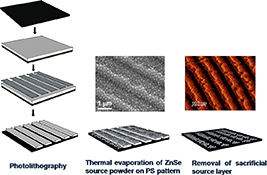
The micro-arrays of ZnSe nanospheres on a self-assembled sacrificial polystyrene mask showed excellent structural, morphological, and optical properties and demonstrated its usage in photovoltaic devices as an improved superior antireflective coating, with the reflectance decreased to nearly half of that of the ZnSe nanospheres fabricated on Au- and SU-8-coated Si substrates in the range of 300–800 nm.
CH14222A Simple Paper-Based Lab-on-a-Chip for the Detection of a Highly Pathogenic Strain of Porcine Reproductive and Respiratory Syndrome Virus
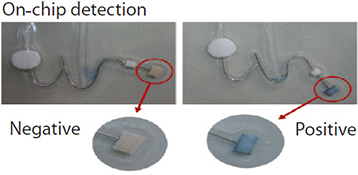
Paper-based laboratory-on-a-chip has become a focusing issue for point of care test. So far, several platforms had been demonstrated, but are limited to chemical tests. The chip here combined reverse transcription loop-mediated isothermal DNA amplification (RT-LAMP) and colorimetric DNA detection, allowing effective assay of virus at a low cost.
CH14040Predicting pKa in Implicit Solvents: Current Status and Future Directions
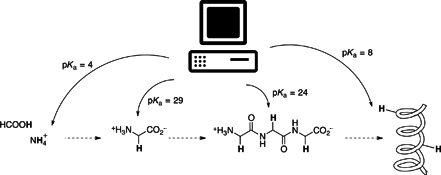
Predicting pKa is important in many areas of science, including chemical synthesis, structural biology, and the development of drug and functional materials. Computational chemistry provides a complementary alternative to experiment for estimating the pKas of species ranging from small monoprotic acids, to larger and conformationally flexible polyprotic acids.
CH13621Synthesis of Carbohydrate-based Natural Products from Leonurus japonicus and their Biological Evaluation as Anti-oxidants

A short and expedient synthesis of three natural products from Leonurus japonicus is presented, along with their application as hepatoprotective agents.
CH14426On the Mechanism of Berberine–INF55 (5-Nitro-2-phenylindole) Hybrid Antibacterials

Berberine–INF55 hybrids are a promising class of antibacterials that link berberine together with the NorA multidrug resistance pump inhibitor INF55. Parallel experiments comparing the activities of three different hybrids and their corresponding berberine–INF55 combinations showed that the hybrids and combinations do not exert antibacterial effects through the same mechanisms.
CH14436Ethylene Trimerisation with Cr-PNP Catalysts: A Theoretical Benchmarking Study and Assessment of Catalyst Oxidation State
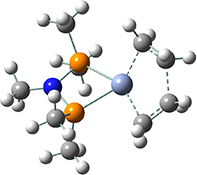
A model for the homogeneous Cr-PNP ethylene trimerisation and tetramerisation catalyst system has been studied theoretically, with the aim of identifying suitable DFT methods for treatment of this catalyst, and evaluating the likely oxidation and spin states of the active species.
CH13701Novel Anthranilic Diamide Insecticides: Design, Synthesis, and Insecticidal Evaluation

Three series of new anthranilic diamide derivatives containing sulfide, N-cyanomethylsulfilimine, and N-cyanomethylsulfoximine moieties were designed and synthesized by coupling the active substructures of anthranilic diamides and sulfoxaflor. Bioassay results indicated that most of the synthesized compounds possessed good insecticidal activities against Mythimna separata and Plutella xylostella when compared with the positive control cyantraniliprole.
CH13673Role of Anion–π Interactions in the Supramolecular Assembly of Salts Containing Asymmetrical Bis(pyridyl) Cations
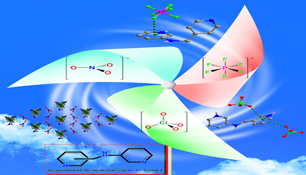
Self-assembly of three flexible bis(pyridyl) molecules with different inorganic acids (HPF6, HClO4, and HNO3) leads to the formation of eight salts, which exhibit diverse architectures involving hydrogen bonding and anion–π interactions.
CH13700Efficient Synthesis of 2-Imidazolines in the Presence of Molecular Iodine Under Ultrasound Irradiation

An efficient one-pot synthesis procedure of 2-imidazolines from aldehydes and ethylenediamine using molecular iodine and potassium carbonate in absolute ethanol at 25–30°C under ultrasound irradiation is described. The synthetic strategy has several advantages: mild conditions, low costs, readily available catalyst, short reaction times, and good-to-excellent yields.
CH14032Theoretical Studies on Phosphorescent Materials: The Conjugation-Extended PtII Complexes
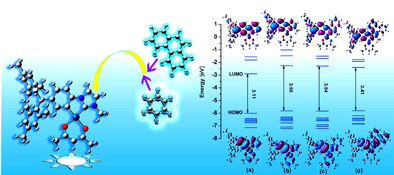
The theoretical geometries, electronic structures, emission properties, and radiative decay rate constants (kr) of four Pt complexes were investigated. The variation in charge transfer properties induced by the conjugation-extended methylimidazole group and the kr results revealed that designed complex D is a more efficient blue phosphorescence material with a 497 nm emission.
CH13678Synthesis of Biocompatible Gelatin-functionalised Graphene Nanosheets For Drug Delivery Applications
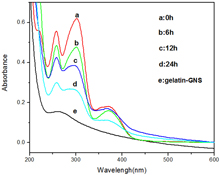
Gelatin-functionalised graphene nanosheets (gelatin-GNS) with good biocompatibility were successfully synthesised using gelatin as a reductant. The gelatin-GNS adsorbed methotrexate (MTX) via strong π–π stacking interaction, exhibiting a high MTX drug loading capacity and excellent ability for controlled drug release. The pH-dependent release behaviour of MTX from MTX@gelatin-GNS showed that the release amount under acid conditions was much higher than that under neutral conditions, indicating a gelatin-mediated sustained release process.



